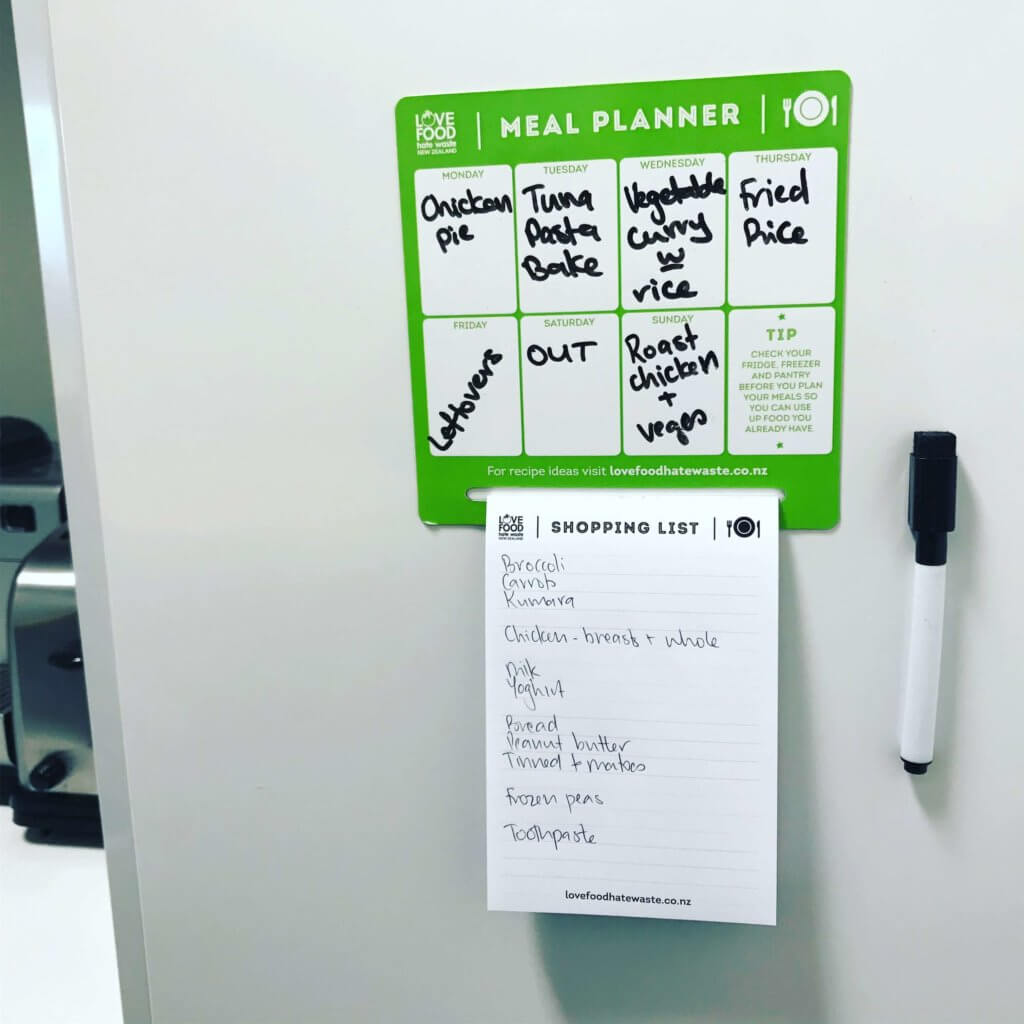Meal planning can reduce how often you shop and shorten your time in the supermarket

Meal planning will save you time, money, food and stress.
One of the easiest ways to reduce your food waste is to buy what you need, and eat what you buy. In order to avoid spending too much money at the supermarket and coming home with food that will only end up going to waste, you need to go to the supermarket armed with a meal plan and a shopping list. During the current lockdown if we can all shop less frequently and spend less time in the supermarket, it will keep vulnerable people in our communities safer.
Many people consider meal planning a chore – after all, it is hard to predict what you may feel like for dinner later in the week. But the benefits of making a plan far outweigh the 20 minutes it takes, which include:
- It removes the 5pm panic of what’s for dinner
- It will save you money because you will only be buying food you will eat
- It will save you time because you won’t have to go to the supermarket as often
- It ensures greater variety in your diet
- You will waste less food because you should be eating everything that you buy
If meal planning is new to you, follow our step-by-step guide which will help set you up for a week of easy and organised meals.
A step-by-step guide to meal planning:
Before you begin, make some lists.
1. Ingredients you already have: Go through your fridge, freezer and pantry and make a list of all of the key ingredients that you already have.
2. Meals you can make with what you already have: Using the list you have just made, write down all of the meals that you can already make with the food that you have.
3. Family favourites: Make a list of all of your family’s favourite meals – things that everyone eats and are on usual rotation in your household.
4. New recipes to try: If you want to add more recipes to your usual dinner rotation, flick through your recipe books or scour the internet for recipe ideas that can be added to your meal plan. Pay attention to how long meals take to cook as you don’t want to spend 90 minutes on a recipe if you only have 45 minutes to get dinner on the table. If you are on a budget check out our Easy Choice Family Kai meal plans with recipe ideas for budget family meals.
Once you have your lists, keep them in a handy place so that you can easily refer to them each week when it comes time to meal plan.
To make your meal plan when shopping in lockdown:
1. You won’t be going anywhere so ideally plan meals for a full seven days. But still make sure you allow for a takeaway night either making your own pizzas or burgers or buying them ready made from the freezer section. Just because its lockdown there’s no reason you can’t have a treat night!
Tip: It’s a good idea to plan for at least one dinner which can be entirely made from ingredients you already have just in case an item on your shopping list is out of stock when you get to the supermarket.
2. Once you have your basic outline of what you need for the week, take a look through your fridge, freezer and pantry and write down any items that need to be eaten this week.
3. Using the above items, plan some meals to use them up.
4. Then, consult your list of family favourites and new recipes to try and fill in the gaps of what you need.
Tip: There are many meals that work well over two nights – either they make enough to feed your family twice so you get a night off cooking, or you can take the leftovers from one meal and turn it into something else e.g. leftover roast chicken can become a chicken pie the following night.
6. Once you have your plan, write a shopping list of all the things you need to buy for your dinners, and any other meals you have planned. Don’t forget to add all of your other groceries to the list before you head to the supermarket.
Tip: If you are prone to forgetting to take the list to the supermarket, take a photo of it with your phone as soon as you have written it so even if you leave it at home, you still know what you need.
Tip: If you have time reorder your shopping list in the order of the supermarket aisles – that way you will be in and out much faster and will cross paths with less meal. Most supermarkets follow a layout of
- Fresh fruit and vegetables
- Delicatessen / bakery
- Butchery and seafood
- Dried and tinned goods
- Cleaning products
- Dairy and chilled
- Frozen food
7. Once you have returned from the supermarket and unpacked your groceries decide which meals you will make first. Some vegetables will store for longer than others so there may be meals which need to be eaten sooner than others. Leave any meals made from pantry and freezer staples until just before you need to go shopping again.
8. If you couldn’t find some items in the store, make a note and pin it to your fridge as that will be the start of the following weeks shopping list.